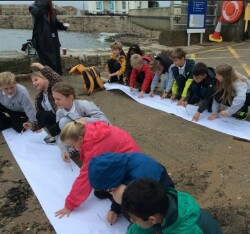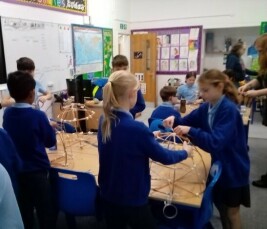Art
At Great Chart, Art and Design are vessels through which we foster creativity and embrace the uniqueness of every child.
Carefully planned units of art, which build around our Golden threads, enable children to develop their confidence, creativity and level of skill. As we explore and discuss a range of diverse artists, designers, architects and craft makers, personal preferences are formed and inspiration gained to enable the formulation of meaningful ideas to be expressed however chosen. Reflection and creative experimentation, in hand with progressive skill teaching and practice, means everyone produces revised finished pieces to be proud of and reflect individuality - we love spending time looking at each other’s work and discussing these!

Watercolor workshop - we enjoyed our annual ‘Turner and the elements outdoor tour’ after looking at and appraising the artworks in the Turner contemporary.

Sculpting toadstools for the carnival of Baubles Enchanted Forest; we paraded our lanterns through Ashford town one cold Saturday evening!
Useful Links:
For our school community, check out and add to our Great Chart art! https://classroom.google.com/c/NDE0ODQzNDcwNTA0
Have a go at creating like an artist: https://www.tate.org.uk/art/create-artist
Discover some famous artists: https://www.tate.org.uk/kids/explore
Enjoy art in in Ashford:
Follow the art trail:
https://www.loveashford.com/articles/unframed-ashford-mural-festival/
Submit your artwork to Victoria Park Art Gallery:
https://victoriaparkashford.co.uk/art-gallery
If you visit Folkestone, have a look at the artwork around the town - can you spot the really famous artists;’ creations?
https://www.creativefolkestone.org.uk/folkestoneartworks/
Down to Margate!
